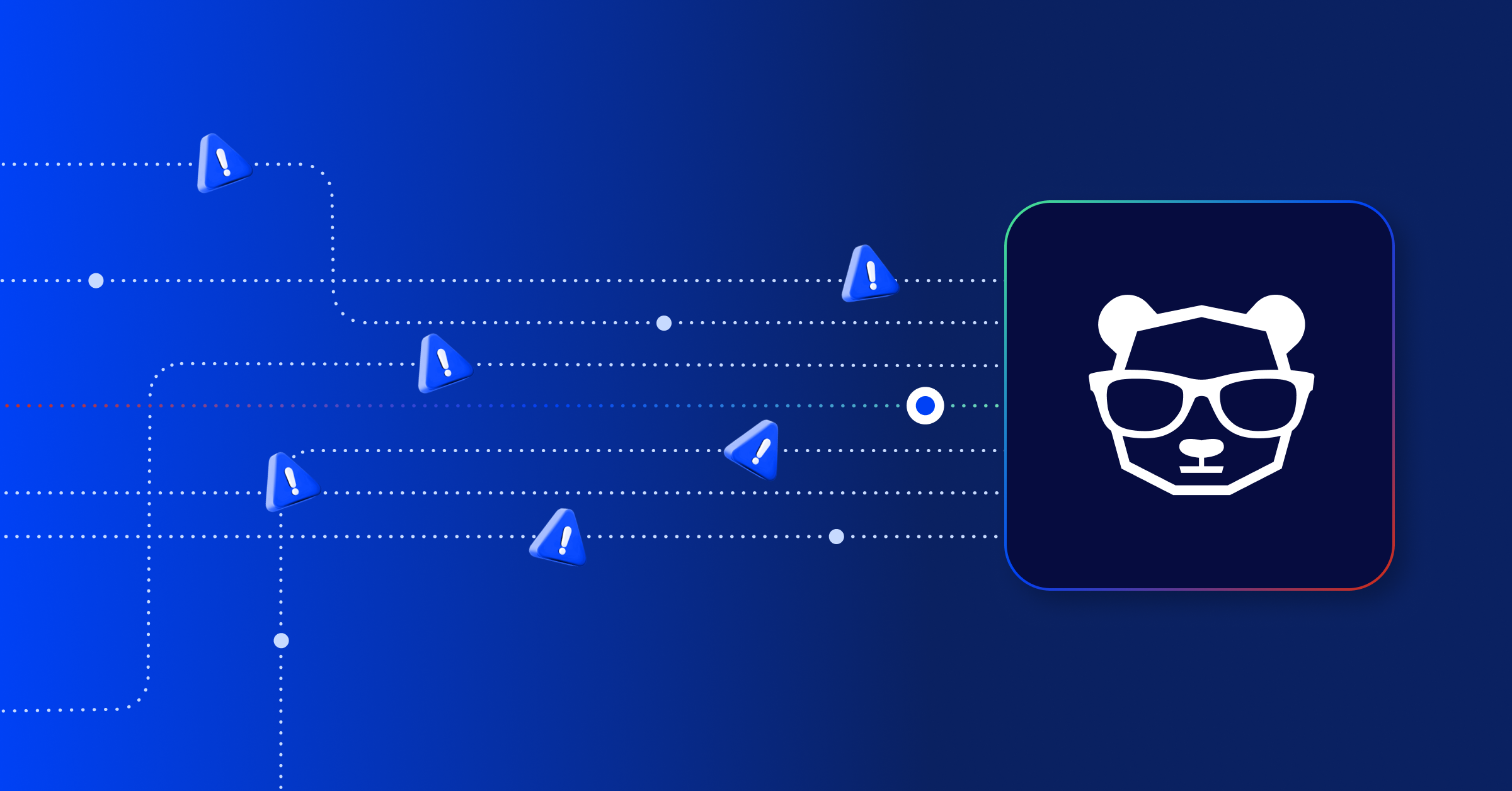Why monitoring your application is important

Effective monitoring and observability tools are critical for modern enterprises. Daily operations, digital transformation, moving to a cloud-native architecture, and an ever-evolving tech stack all require ITOps, DevOps, and SRE teams to monitor increasingly complex systems.
So what happens if your applications suddenly cease to function? Every moment of downtime translates to lost income, decreased customer satisfaction, and harm to your company’s reputation.
Fortunately, there’s a solution. Implementing application performance monitoring (APM) can safeguard your organization against the potential disruptions caused by application failures.
What is the purpose of application performance monitoring?
Application performance monitoring systematically tracks application health, performance, and behavior in real-time. Using software tools to monitor key metrics like response time, throughput, error rates, and resource utilization, APM equips IT teams with the necessary information to identify performance bottlenecks, pinpoint performance degradation, and optimize resource allocation for all business-critical apps.
Benefits of application monitoring in ITOps
The following are the key benefits of application monitoring for ITOps teams.
- Detection and remediation: With real-time application monitoring, the system can quickly identify any anomalies or disruptions in the application’s performance. This proactive approach allows ITOps teams to address incidents promptly before they escalate into outages, ensuring the seamless functioning of applications and preventing potential downtime. Organizations can also implement automated responses and remediation strategies, minimizing the impact of disruptions on overall system reliability.
- Improved performance: By continuously analyzing various performance metrics, ITOps teams gain insights into the behavior and efficiency of applications. Armed with this information, they can optimize configurations, allocate resources more effectively, and implement performance-tuning measures.
- Improve user satisfaction: Application monitoring in ITOps directly contributes to a seamless and satisfying customer experience by providing valuable insights into how end-users interact with the system. ITOps teams better understand user behavior patterns, preferences, and pain points—and, accordingly, optimize user interfaces and identify and resolve user experience issues, ensuring applications align closely with user expectations.
- Pinpoint performance problems and roadblocks: By analyzing performance metrics and dependencies, ITOps teams can precisely locate bottlenecks, whether they stem from infrastructure limitations, code-level inefficiencies, or other sources. This targeted approach enables organizations to quickly address these issues, optimize workflows, and ensure the uninterrupted operation of critical business processes. As a result, the overall efficiency and resilience of the IT infrastructure are significantly enhanced.
Types of application monitoring
You can use the following application monitoring approaches to get comprehensive insights for proactive application management and continuous improvement.
Performance monitoring
- Objective: Measure and analyze the application’s performance to identify bottlenecks, optimize code, and ensure efficient resource usage.
- Metrics to consider: Response time, throughput, latency, resource utilization (CPU, memory, disk, network).
User experience (UX) monitoring
- Objective: Evaluate the application’s usability to ensure a positive and seamless experience for end-users.
- Metrics to consider: Application Performance Index (Apdex), page load times, transaction success rates, user interactions, and error rates.
Error monitoring
- Objective: Detect and analyze errors and exceptions in the application. Identify and resolve issues that lead to errors, improving application reliability and stability.
- Metrics to consider: Error rates, types of errors, stack traces, and error context.
Availability monitoring
- Objective: Ensure the application is available and accessible to users. Detect and address issues that may impact the availability of the application, minimizing downtime.
- Metrics to consider: Uptime, downtime, and response status codes.
Infrastructure monitoring
- Objective: Monitor the underlying infrastructure supporting the application to identify and address issues impacting application performance.
- Metrics to consider: Server health, network performance, and database performance.
Log monitoring
- Objective: Analyze logs generated by the application and infrastructure components to diagnose and troubleshoot issues, and track application events and behaviors.
- Metrics to consider: Log entries, error messages, and warnings.
Security monitoring
- Objective: Monitor applications for security-related events and vulnerabilities, detecting and responding to security threats and ensuring the integrity and confidentiality of data.
- Metrics to consider: Anomalies, intrusion attempts, and security incidents.
Application monitoring tools and software
Application performance monitoring tools simplify the oversight of all business apps and enable swift action when performance issues arise. Consider the following key features when selecting application monitoring software.
Tracking and diagnosis
Ensure the APM tool quickly identifies and diagnoses issues affecting performance, such as slow response times, high error rates, and resource utilization problems. Look for a monitoring solution with performance notifications for timely responses.
Root cause analysis
Opt for application monitoring software that provides detailed root cause analysis when an issue is detected. This goes beyond resolving immediate problems, allowing you to address the underlying cause and prevent recurrence.
Performance metrics and reporting
Choose an APM tool that provides easily understandable data visualizations and actionable reports. This includes benchmark performance metrics, insights into current operations, and predictive analytics.
Best practices for application monitoring
You need the right tools and processes to fully leverage the benefits of application monitoring. Here are tips for maximizing APM effectiveness.
Establish internal processes and rules
To be truly effective, seamlessly integrate APM into existing business processes. Well-defined processes enhance the impact of APM on overall business operations. Additionally, customize application monitoring systems to specific business needs, clearly defining ‘normal’ behavior and deviations. This customization ensures that alerts align precisely with business outcomes.
Invest in the right tools that align with your objectives
Start by clearly defining your application monitoring goals and identifying KPIs. Invest in tools that align with your objectives, prioritizing those offering real-time monitoring, root cause analysis, and actionable reports. Ensure the chosen tool monitors the entire infrastructure stack in the appropriate language and can correlate performance with business outcomes.
Set automated alerts for timely action
Configure automated alerts within your APM tool based on predefined metrics. These alerts enable swift action in response to unexpected deviations, preventing critical insights from being overlooked and helping maintain seamless operations.
Continuously review and optimize
Actively review reports for insights and deviations to guide future app requirements and tech stack streamlining. A proactive approach ensures quick responses to identified problems. Focus on patterns and anomalies in application behavior, taking steps to eliminate recurring issues, continuously optimize app performance, and enhance end-user experience.
Deploy across the entire organization
Extend APM deployment beyond developers and IT teams to involve the entire organization. This collaboration across teams helps build an understanding of the connection between application performance and overall business success. This holistic approach ensures a comprehensive understanding and application of APM practices throughout the organization.
Application monitoring and AIOps
AIOps is a transformative approach to optimizing IT operations, extending beyond individual applications and covering the entire IT landscape.
At its core, AIOps uses artificial intelligence to analyze extensive datasets from various IT components, including applications, networks, servers, and databases. This infusion of artificial intelligence streamlines the monitoring process, enabling proactive issue identification and automated responses.
While traditional application monitoring focuses on specific metrics related to application performance, AIOps takes a holistic view of the entire IT infrastructure. Leveraging machine learning algorithms and advanced analytics, AIOps can improve your observability strategy by identifying patterns, anomalies, and correlations across diverse data sources.
The result? ITOps teams have a more comprehensive understanding of IT ecosystem interdependencies.
AIOps goes further by optimizing IT operations in real-time. Automated tasks, predictive issue identification, and actionable alerting boost efficiency, resilience, and overall IT landscape performance.
Improve application monitoring with BigPanda AIOps
BigPanda elevates application monitoring through AIOps, leveraging advanced artificial intelligence and machine learning to significantly enhance the efficiency of application monitoring data by correlating it with other IT data to gain improved visibility and insights.
Whether streamlining the mean time to detect and resolve issues, improving reliability and availability, or optimizing for manual toil in IT, BigPanda aligns with diverse operational goals. Additionally, the platform provides easy access to actionable insights with real-time and historical data on service availability, operational efficiencies, and team performance.
Get a personalized demo to experience first-hand how BigPanda can enhance your organization’s ITOps practice.




